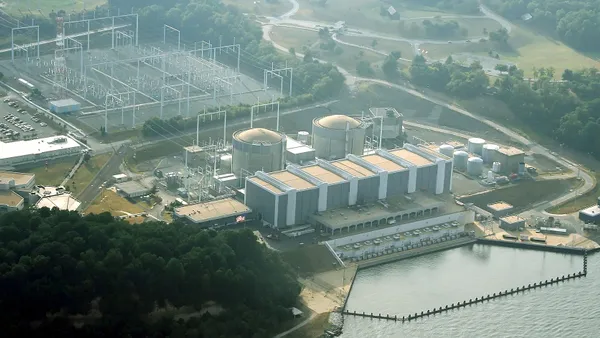Dive Brief:
- Duke Energy has proposed fully excavating a dozen coal ash basins in North Carolina, removing the coal waste and reusing it in structural fills or disposing of it in lined landfills.
- The company is now preparing to close 24 of its 36 basins in the Carolinas, and is continuing to look for solutions at another 12 locations specific to North Carolina.
- Environmentalists hailed the decision, Charlotte Business Journal reported, praising the company while also calling for additional work to be done cleaning up coal ash sites.
Dive Insight:
Duke is continuing to address cleaning up coal ash disposal ponds, and now has targeted two dozen of the facilities where it is proposing full removal. That's good news for environmentalists, though they may not be so pleased with an alternative the company is considering. According to Charlotte Business News, the company is considering capping some of the remaining ponds in place rather than a full excavation.
A spokesman for the Waterkeeper Alliance in North Carolina told Charlotte Business News, “we’re very pleased that Duke Energy has now committed to a full cleanup at half of its sites,” but he went on to add “we’re also disappointed that this $50 billion company isn’t making the same commitment for the other seven plants in North Carolina.”
The company's decision comes about a week after the North Carolina Supreme Court ruled last week that the state’s recently enacted coal ash law allows Duke Energy until 2029 to complete its cleanup.
“We’re making strong progress to protect groundwater and close ash basins, delivering on our commitment to safe, sustainable, long-term solutions,” Duke Energy president and CEO Lynn Good said in a statement.
The company wants to excavate five basins at the Cape Fear Plant, five at H.F. Lee Plant, one at W.H. Weatherspoon Plant, and one inactive basin at the Cliffside Steam Station.
Duke also said in its statement that engineering work completed to date has shown the remaining 12 basins could be candidates for a broader range of closure options, including an approach that “consolidates the ash on site, caps it with a durable and impermeable liner, and protects groundwater.”














